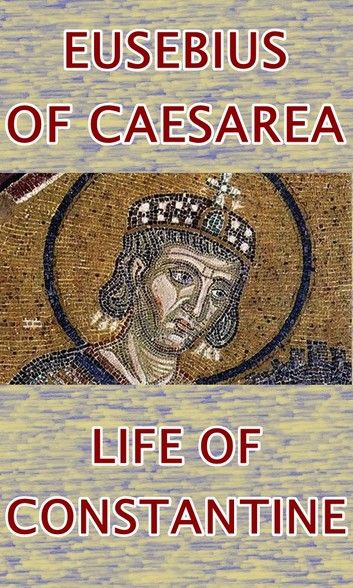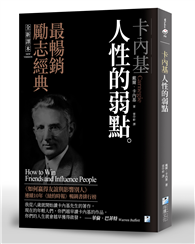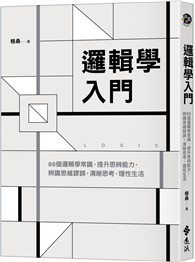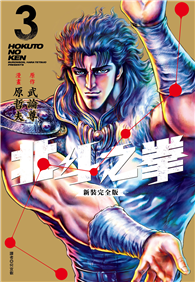| FindBook |
有 1 項符合
Life of Constantine的圖書 |
 |
Life of Constantine 作者:Eusebius of Caesarea 出版社:limovia.net 出版日期:2013-04-18 語言:英文 |
| 圖書館借閱 |
| 國家圖書館 | 全國圖書書目資訊網 | 國立公共資訊圖書館 | 電子書服務平台 | MetaCat 跨館整合查詢 |
| 臺北市立圖書館 | 新北市立圖書館 | 基隆市公共圖書館 | 桃園市立圖書館 | 新竹縣公共圖書館 |
| 苗栗縣立圖書館 | 臺中市立圖書館 | 彰化縣公共圖書館 | 南投縣文化局 | 雲林縣公共圖書館 |
| 嘉義縣圖書館 | 臺南市立圖書館 | 高雄市立圖書館 | 屏東縣公共圖書館 | 宜蘭縣公共圖書館 |
| 花蓮縣文化局 | 臺東縣文化處 |
|
|
Life of Constantine (Vita Constantini) is a panegyric written in honor of Constantine the Great by Eusebius of Caeserea in the 4th century AD. It was never completed due to the death of Eusebius in 339. The work provides scholars with one of the most comprehensive sources for the religious policies of Constantine's reign. In addition to detailing the religious policies of the Roman Empire under Constantine, Eusebius uses Life of Constantine to engage several of his own religious concerns, such as apologetics, as well as a semi-bibliographic account of Constantine. The reliability as a historical text has been called into question by several historians, most notably Timothy Barnes, throughout history, due to its questionable motives and writing style.
Divided into four books, Life of Constantine begins with the declaration that Constantine is immortal. This opening sets the tone for the rest of the work, a general glorification and deification for the Emperor and his works on Earth. The work progresses into Constantine’s time under the Emperor Diocletian. Constantine is contrasted with tyrannical Diocletian, whose persecution of Christians and oppressive rule accentuates Constantine as a strong Christian and a just man. This section also established the overarching metaphor in the work, as Eusebius likens Constantine to Moses. Eusebius suggests that it was God’s will to raise Constantine to emperor, as a reliever of the Christian torment in the Empire.
Eusebius moves on from the introduction to Constantine’s military exploits for the remainder of Book 1 and half of Book 2. The first of which, the campaign against Maxentius, contains perhaps the most famous scene in the Life of Constantine, the vision of Constantine. This section has generated ample controversy, as there is much suspicion regarding the validity of the story. Eusebius claimed that he heard the story from the mouth of Constantine himself, however much of modern scholarship agrees that the stories is a distortion of facts or completely fabricated. The same account is often compared to Lactantius’, which provides a radically different depiction of the same story. Eusebius move on to Constantine’s next military campaign, the war against Lincinius. Eusebius facilitates in the blackening of Lincinius, who was pro-Christian, that was started by Constantine as imperial propaganda to justify the aggression against Lincinius.
The work transitions from military campaigns to the religious rule of Constantine. The rest of book 2 ends with the outlining of the religious problems faced by Constantine. Book 3 is largely concerned with Constantine’s constructive settlement of the various religious problems. The section includes the only continuous contemporary account of the Council of Nicaea as well as the pilgrimage to Bordeaux. The Council of Nicaea has been examined closely by scholars for bias however, as Eusebius was himself very involved in the politics of the council. The remainder of the book deals with the ecclesiastical laws of Constantine. Eusebius focuses much of his attention in painting Constantine in an extremely Christian light, building holy sites and destroying pagan temples. The majority of Constantine’s imperial letters appear in book 3.
Book 4 is largely concerned with Constantine and his personal life and final accomplishments, concluding with the death of Constantine. Most of the work is devoted to the illustration of Constantine’s personal piety. His trip to Persia is painted in an apologetic universal Christian theme, his laws forbidding idol worship of his own image and the reiteration of the suppressing of idol worship and sacrifice. As the work concludes, Eusebius give much effort to uncover a personal Constantine, taking time to describe the Emperor as a remarkable public speaker and preacher, as well as a listener. Near the Emperor's death, Eusebius focuses on Constantine’s mental and spiritual strength, as well as his physical strength, helping finish the portrait of a nearly godlike man. The panegyric ends with the death of the Emperor, his funeral, and the succession of the throne.
|











